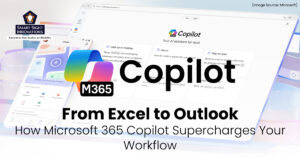 With numerous platforms and frameworks available today for developing apps, developers are overwhelmed with choices. The decision-making process can sometimes be challenging anytime you have to choose a hybrid app development platform.
With numerous platforms and frameworks available today for developing apps, developers are overwhelmed with choices. The decision-making process can sometimes be challenging anytime you have to choose a hybrid app development platform.
What Is a Hybrid App?
Hybrid apps are mobile applications that combine elements of both native and web applications. They are developed using web technologies like HTML, CSS, and JavaScript and are typically wrapped inside a native container.
This container enables the app to access native device features, such as the camera, GPS, and notifications, through a bridge like Apache Cordova. The key advantage of hybrid apps lies in their ability to run on multiple platforms, such as iOS, Android, and the web, using a single codebase.
This code reuse significantly reduces development time and costs compared to building separate native apps for each platform. Developers only need to maintain a single codebase, and the app can be deployed to different platforms with minimal modifications. Hybrid apps are built using frameworks like Ionic, React Native, Xamarin, or Flutter, which provide tools and libraries to bridge the gap between the web and native environments.
These frameworks offer a set of pre-designed UI components, allowing developers to create mobile apps with a native-like look and feel. Additionally, hybrid apps can take advantage of progressive web app (PWA) principles, enabling features like offline support, faster load times, and enhanced user engagement.
PWAs provide a seamless user experience by allowing the app to be installed on the user’s device and accessed through the home screen, just like a native app. However, hybrid apps also have some limitations. Since they rely on a native container to access device features, there may be a performance gap compared to fully native apps. In situations where complex graphics or intense processing is required, a native app might be more suitable.
Moreover, hybrid apps are dependent on the performance and capabilities of the web view within the native container. Updates to the web view may affect the app’s behavior across different devices and versions of operating systems.
Overall, hybrid apps are an excellent choice for projects that prioritize cost-effectiveness, cross-platform compatibility, and rapid development. They are particularly useful for applications with relatively simple UI requirements and where the benefits of code reuse outweigh potential performance differences.
However, for applications with advanced graphics, heavy computations, or demanding user experiences, native app development might still be the preferred option to ensure optimal performance and seamless integration with the specific platform’s ecosystem.
What Is Ionic?
Ionic is an open-source framework for building cross-platform mobile applications using web technologies such as HTML, CSS, and JavaScript. It was first introduced in 2013 by Drifty Co. and has since become a popular choice among developers for creating hybrid mobile apps that can run on multiple platforms, including iOS, Android, and the web.
At its core, Ionic leverages web technologies to create a single codebase for building mobile applications, enabling developers to write code once and deploy it across various platforms. This approach significantly reduces development time and costs compared to native app development.
Ionic is built on top of Apache Cordova (formerly known as PhoneGap), which acts as a bridge between the web app and the native device features. Cordova provides access to native device functionalities like the camera, geolocation, contacts, and more, allowing Ionic apps to access hardware capabilities and deliver a native-like experience.
Ionic also supports Angular, a popular JavaScript framework, making it easy to build dynamic and responsive applications with its component-based architecture. In addition to Angular, Ionic also works with other popular frameworks like React and Vue.js, giving developers the flexibility to choose the technology stack that best fits their skills and project requirements.
Ionic follows the principles of progressive web apps (PWAs), enabling the creation of applications that can be installed on users’ devices like native apps but are delivered through the web. PWAs ensure offline support, faster load times, and enhanced user engagement, improving the overall user experience.
While Ionic simplifies the development process and facilitates code reuse, it’s worth noting that hybrid apps may not offer the same performance and capabilities as fully native applications. In cases where ultra-high performance or access to the latest device features is crucial, native development might be more suitable.
Ionic for Building Hybrid Mobile Apps
For many developers, creating mobile apps has become an important skill. With Ionic, you can create hybrid mobile apps with the same look and feel as native mobile apps. It is a complete open-source SDK for creating hybrid mobile apps.
Using the same technologies that are used to create websites and web applications such as HTML, CSS (Cascading Style Sheets) and JavaScript, developers can quickly construct hybrid mobile apps with Ionic.
With the help of Cordova, Ionic introduces a web application inside a native app. Industry-standard web technologies like HTML5, CSS3 and JavaScript may be used for cross-platform development with Cordova which is an open-source mobile development framework.
Applications run under platform-specific layers and rely on standards that are API-compliant to access the sensors, data and network status of each device. It includes support for mobile features including touch input and user interface controls and is compatible with Angular to construct web applications for mobile devices.
The ionic framework provides over 120 native device functions, including Bluetooth, HealthKit and fingerprint identification, with Cordova and PhoneGap plugins and TypeScript extensions.
While compiling and redeploying your app at every stage of development is for amateurs, you can develop your apps with Live Reload. Additionally, deep linking, AoT Compiling and a unique animation API are useful features.
The front-end portion of hybrid app creation, which makes the software user-friendly, is the primary focus of ionic app development. It proves to be a valuable tool for any organization looking to appeal to the mobile market.
Features of Ionic Framework in Hybrid App Development
Some of the key features of Ionic that make it a preferred choice for hybrid app development are:
UI Components and Theming
Ionic comes with a comprehensive set of pre-designed UI components, such as buttons, forms, cards, lists, and modals. These components follow the material design and iOS Human Interface Guidelines, providing a consistent and intuitive user interface across different platforms. Developers can easily customize the look and feel of these components to match the app’s branding using CSS variables and SASS.
Platform-Specific Styles
Ionic allows developers to apply platform-specific styles, ensuring that the app’s UI looks and behaves natively on each operating system. This feature enables seamless integration with iOS and Android design patterns, making the app feel familiar and native to users on their respective devices.
Angular and React Integration
Ionic has excellent integration with Angular and React, two popular JavaScript frameworks. Developers can leverage the capabilities of these frameworks to create dynamic and responsive user interfaces, making it easier to manage complex app logic and state management.
Command-Line Interface (CLI)
Ionic provides a powerful CLI that automates repetitive tasks and simplifies the development process. Developers can use the CLI to generate new pages, components, and services, run development servers, build app binaries, and perform other essential tasks, streamlining the app development workflow.
Cross-Platform Support
One of the main strengths of Ionic is its cross-platform support. A single codebase can be used to build apps for iOS, Android, and the web. This code reusability significantly reduces development time and costs, making it an attractive choice for businesses seeking to target multiple platforms simultaneously.
Cordova Plugin Integration
Ionic is built on top of Apache Cordova, which acts as a bridge between web technologies and native device features. Cordova plugins allow developers to access native capabilities like the camera, GPS, push notifications, and more. This integration enables hybrid apps to deliver functionalities similar to those of native applications.
Progressive Web App (PWA) Support
Ionic supports the principles of progressive web apps, which enable enhanced user experiences through features like offline support, faster load times, and seamless app installation from the web. PWAs provide a reliable and engaging experience, ensuring the app performs well in varying network conditions.
Theming and Branding
With Ionic’s theming and branding capabilities, developers can create visually stunning apps that align with the brand’s identity. Customizing colors, typography, and other visual elements ensures that the app is visually appealing and reinforces brand recognition.
Live Reload and Development Server
Ionic’s live reload feature allows developers to see instant changes as they code, providing a more efficient development experience. The development server enables real-time updates in the browser or on connected devices, eliminating the need to manually refresh the app during development.
Community and Plugin Ecosystem
Ionic boasts a thriving community of developers, providing a wealth of resources, tutorials, and support. Additionally, Angular’s plugin repository includes over 2,000 modules that make app development simpler and possible.
These plugins extend the functionality of the framework, allowing developers to access various third-party services and features seamlessly. Similarly, the Cordova repository offers an abundance of modules to help with the development of creative mobile apps.
App Performance Optimization
Ionic includes tools for optimizing app performance, such as Ahead-of-Time (AOT) compilation and tree shaking. These techniques help reduce the app’s bundle size and improve load times, ensuring a smoother user experience.
Reusable Components
Developers can create reusable components in Ionic, making it easier to maintain consistency throughout the app. Reusable components save development time and effort, and they can be shared across different pages or projects.
Ionic’s impressive array of features makes it a top choice for hybrid app development. With its rich set of UI components, platform-specific styling, and seamless integration with Angular and React, developers can create visually appealing and responsive apps. The support for Cordova plugins enables access to native device features, while progressive web app capabilities enhance user experiences.














